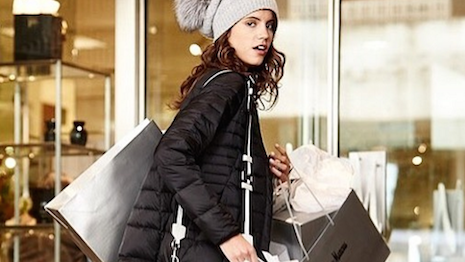 While consumers have changed the way they shop, bricks-and-mortar retail is still vital. Image credit: Neiman Marcus.
While consumers have changed the way they shop, bricks-and-mortar retail is still vital. Image credit: Neiman Marcus.
NEW YORK – Much of the retail innovation happening today is being driven by consumers, as their preferences for experiences and digital engagement push brands to evolve. According to a keynote by a PwC executive at the Apparel Importers Trade & Transportation Conference on Nov. 7, about two-thirds of shoppers say that experiences are more effective than advertising, while three-quarters of millennials opt for experiences over things. Creating positive engagement is valuable for brands, as PwC's research shows 40 percent of consumers will spend more if they have a good experience. "How we engage with apparel, how we engage with retail stores, how we engage from a digital perspective—it’s all new rules," said Ellen Rodriguez, managing director of PwC. "And so that completely opens up new opportunities for new companies to come in and take our dollars and steal our hearts. "It’s my perspective that I find this the most interesting time to be in retail," she said. "Yes, it’s extremely difficult and we plan ahead for all of these changes and just when we think we’ve got it, it’s changed again. So we have to be nimble and flexible." Changing consumer Back in 2014, about 65 percent of consumers’ time was spent on their phones. Today that statistic has not moved, but the amount of sales generated on mobile devices has accelerated in the last few years. Boomers are more apt to buy via desktop than mobile, but Ms. Rodriguez noted that this generation was typically later to adopt technology. For instance, they were slower to get on Facebook and Instagram, but once they arrived they latched on. While ecommerce is growing, half of shoppers still visit physical stores. Aside from changing channels, consumers are evolving style trends, with 56 percent of consumers favoring more casual attire. As millennials became the predominant generation in the workforce, they helped usher in a less formal work wardrobe.
Instagram post from Lululemon Meanwhile, athleisure has taken off courtesy of brands such as Lululemon and lifestyle changes. Four in 10 consumers work in the gig economy, which often requires less business clothing. Luxury shoppers are increasingly turning towards more casual styles for self-expression, according to a recent report from the Boston Consulting Group and Altagamma. Millennials are expected to represent half of the luxury market by 2024, and their fashion choices differ from previous generations, as they are more apt to mix high and low labels as they seek out clothing that fits their personal brand. Traditional luxury brands are responding through adaptation and collaboration (see story). Holiday outlook PwC has forecast a 5 percent year-over-year growth in holiday spending, with 84 percent of consumers saying they plan to spend the same or more this year. Among the categories of customers who show more tendency to up their holiday purchasing are millennials with incomes greater than $70,000 and millennial dads. High earning millennials plan to spend two and a half times more than others in the generation. Men actually plan to spend more than women, averaging around $1,400, above the overall average of $1,250. Surprisingly, consumers who consider themselves savers and those who identify as spenders are expecting to spend about the same amount. As the holiday season is expected to see a healthy spend from consumers, luxury marketers need to attract gift shoppers with an emphasis on experiential retail that ties into the holiday spirit. According to a report from Harris Insights in collaboration with OpenX, 60 percent of consumers believe that Black Friday shopping is overwhelming, and 44 percent say that they even avoid shopping the day after Thanksgiving. However, Bazaarvoice findings show that it is not just the low prices that attract shoppers on Black Friday, but that it also jumpstarts the festive feeling for celebrators (see story). Labels will drive a lot of purchasing decisions, with 70 percent of consumers saying their trust in particular brands leads them to buy. "Brands are still the primary reason we buy one product over another product," Ms. Rodriguez said. "We still want the best price, the best value, but we don’t want to do it in too many stores…we want to spend the least amount of time. "We want a stress-free experience," she said.
